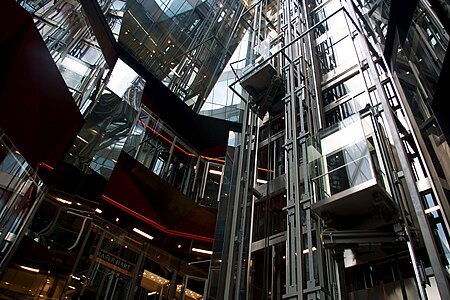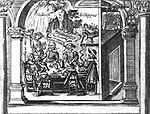One New Change

One New Change is a major office and retail development in the City of London. It comprises 560,000 square feet (52,000 m2) of floor space, including 220,000 square feet (20,000 m2) of retail space and 330,000 square feet (31,000 m2) of office space and is the only large shopping centre in the City of London, the historic nucleus and modern financial centre of London. It cost £500 million to build and was completed in October 2010.The complex is located on New Change, a road linking Cannon Street with Cheapside, in one of the areas of the City historically associated with retailing and markets. It is close to St Paul's Cathedral. The nearest London Underground stations are St Paul's and Mansion House.
Excerpt from the Wikipedia article One New Change (License: CC BY-SA 3.0, Authors, Images).One New Change
New Change, City of London
Geographical coordinates (GPS) Address Website External links Nearby Places Show on map
Geographical coordinates (GPS)
| Latitude | Longitude |
|---|---|
| N 51.5137 ° | E -0.0958 ° |
Address
One New Change
New Change
EC4M 9AF City of London
England, United Kingdom
Open on Google Maps









